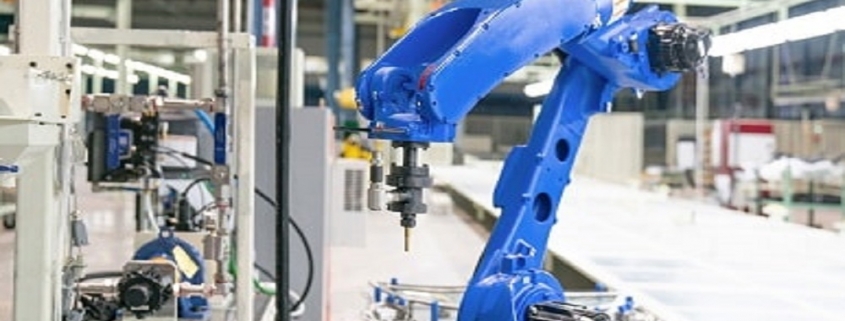Behind the Growing Semiconductor Industry and Renewable Energy Market: Wafer Handling Robots
The wafer handling robots market is predicted to grow at a compound annual growth rate (CAGR) of 7.12% to attain a market size of US$728.462 million by the end of the analysis period, 2026.
Wafer-handling robots are used in manufacturing and semiconductor industries to speed up and optimize the production process by wafer cutting, wafer packaging, wafer cleaning, and aligning the wafers with accuracy. With the increasing demand for smaller and thinner wafers in circuits, the industrial adoptions of wafer-handling robots have increased in years in semiconductor industries. The increasing demand for renewable energy along with its growing application in the industries due to increased technology, automation, and innovation is expected to drive up the market in the coming years. For instance, recently Foxconn has set up a semiconductor design center to make chipsets for self-driving and smart connectivity electric vehicles.
Types of Wafer Handling Robots:
Wafer Handling Robots are mostly available in 2 types: Vacuum Wafer Handling robots and Atmospheric Wafer Handling robots. The atmospheric wafer handling robots operate at ambient atmospheric pressure and are made up of materials like ceramics, aluminum, stainless steel, etc. that will reduce particle contamination from friction, contact, and out-gassing. Vacuum robots operate in vacuum or clean enclosures and are designed specifically to provide cleanliness to the manufacturing process. Of the two, the Atmospheric Wafer Handling robots are expected to hold a major share of the market majorly because of the high competition in the segment attributed to its wide-scale application across the industries.
Industrialization and Regional Trends:
The major contributing factor to the growth of the wafer handling robots market is the rapid industrialization powered by technological advancement and increasing automation. The wafer-handling robot is used in semiconductors, solar cells, electronics, electric cars, etc. that are not just time-saving but also provide accurate results. The industrial revolution that the developing economies are going through along with the already established hub in the developed economies is expected to contribute to the driving market. The growing semiconductor industry that widely applies wafer-handling robots in the Asia-Pacific region including India, South Korea, China, Japan, etc. is expected to become a key player behind the growth of the market. Also, the wide-scale industrialization of North America and Europe is expected to hold a major market share. Besides the growing industrialization in the region, the availability of skilled and literate labor is also a major driving factor for factor. The growing skilled and trained labor and manpower is going to constitute key development in the market in the coming years as skilled labor plays a key role in the installation, handling, and operation of the robots.
Growing Demand for Renewable Energy:
One of the major factors that can contribute to the growth of wafer-handling robots in the coming years is the growing demand for renewable energy across all sectors. The wafer-handling robots are widely used in solar cells that in turn constitute a major component of solar panels. The increasing environmental concerns across all the sectors have given a boost to the wide-scale application of renewable energy platforms. According to IBEF, the non-conventional energy sector of India has received a Foreign Direct Investment inflow of around US$ 10.28 Billion between April 2000 and June 2021. In July 2021, the Ministry of New and Renewable Energy Plans undertook rooftop Solar Program Phase II to install an RTS capacity of 4000 MW in the residential sector by 2022. The active participation of Indian Companies like Tata Power, Adani Renewables, ReNew Power, etc. has made it possible for it to stand at 3rd position in the renewable energy attractive index 2021.
High Installation Cost and Lack of Skilled Labor to Hamper the Growth of the Market:
One of the major challenges for the growth of the wafer-handling robots market is the high installation cost associated with the product. Besides the initial purchase cost of the product, the regular maintenance cost and the cost of skilled and trained labor required to handle the product are also high, which makes it an expensive device to be installed in every industry. The lack of technically trained personnel and expertise in the field to install, monitor, and configure the robot can become a huge obstacle for the market. And not just industrial segmentation, but the high installation cost along with maintenance and skilled labor requirement to understand and handle the complex technology can also hamper the growth of the market in underdeveloped economies that lack these factors.
Coronavirus Pandemic Analysis:
The analysis report also provides a deep study about the impact of the coronavirus on market for wafer handling robots, stating how the lockdown, lack of labor, stringent curfew regulations by the government, export barriers, deeply affected every industry including automotive, semiconductor, defense, aerospace, power and energy, chemical and manufacturing, etc. With the shutting down of industries and operations across the globe, the demand for wafer handling robots went significantly down. The halt of market operations during the pandemic discouraged the growth of the market both from the supply and demand side.
Global Wafer Handling Robots Market Scope:
| Report Metric | Details |
| Market size value in 2019 | US$450.124 million |
| Market size value in 2026 | US$728.462 million |
| Growth Rate | CAGR of 7.12% from 2019 to 2026 |
| Base year | 2019 |
| Forecast period | 2021–2026 |
| Forecast Unit (Value) | USD Million |
| Segments covered | Component, Type, And Geography |
| Regions covered | North America, South America, Europe, Middle East and Africa, Asia Pacific |
| Companies covered | Brooks Automation Inc., Kawasaki Heavy Industries Ltd., Kensington Laboratories, Jel Corporation, Yaskawa Group, Milara Inc., Rorze Automation, Entegris, Milara International |
| Customization scope | Free report customization with purchase |



